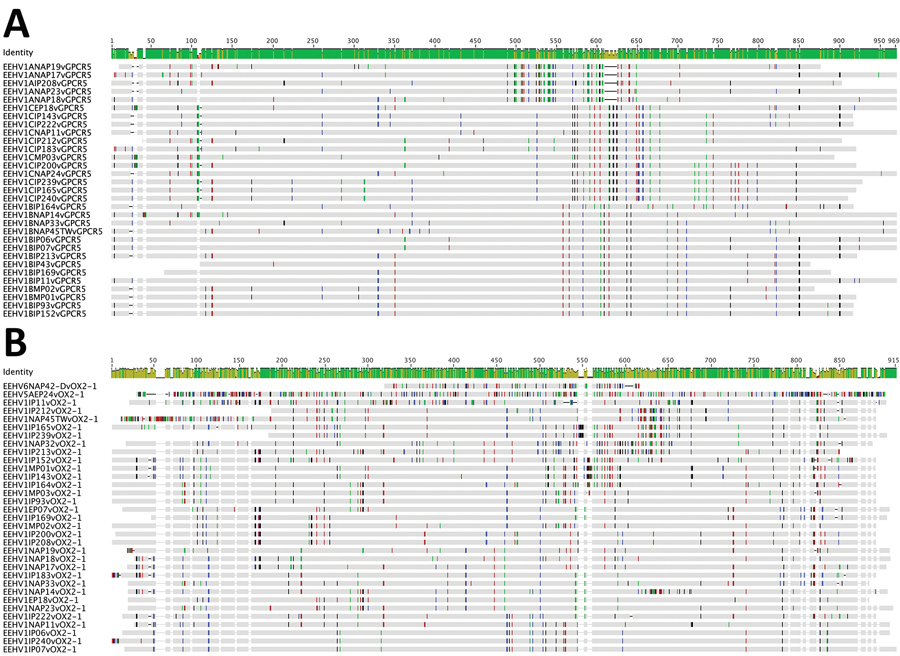Volume 26, Number 1—January 2020
Research
Elephant Endotheliotropic Herpesvirus Hemorrhagic Disease in Asian Elephant Calves in Logging Camps, Myanmar
Figure 2

Figure 2. Nucleotide sequence polymorphism charts for Asian elephant calves that had endotheliotropic herpesvirus hemorrhagic disease in logging camp, Myanmar. Shown are comparisons for hemorrhagic disease cases MP01, MP02, and MP03 across 2 hypervariable EEHV1 PCR loci. A) E5(vGPCR5). B) E54(vOX2-1). Polymorphisms were generated by using Geneious (https://www.geneious.com) and MEGA5 (https://www.megasoftware.net) Bayesian phylogenetic trees comparing the Myanmar Proboscivirus case DNA sequence results with matching data available for all 22 cases from India (IP#) and 2 cases from Sumatra (SP#) plus several representative cases from North America (NAP#) and Europe (EP#) available in GenBank. Both prototype EEHV2(NAP12, Kijana) and EEHV5A(EP24, Vijay) genomes shown in the top lines were used as references in panel B, and EEHV1B(NAP19) was used as the reference for panel A. Assigned subtypes are included with designated code numbers listed on the left-hand side for each genome. Colored short vertical lines indicate single-nucleotide differences from the consensus sequences of all the genomes shown in each panel. Gaps or missing sequence segments appear as blank spaces. EEHV, elephant endotheliotropic herpesvirus.